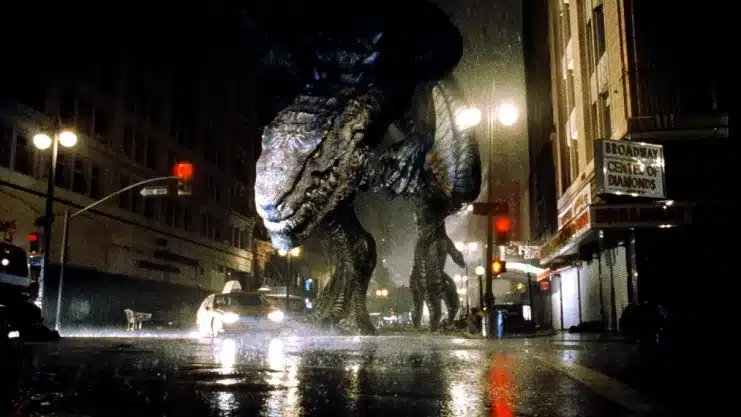
Amid criticisms and disappointments, Takashi Yamazaki’s vision of the controversial Godzilla episode directed by Roland Emmerich highlights the hidden virtues.
Imagine, for a moment, walking out of a movie theater, confused and wondering what you just saw. That’s what many of us felt after the 1998 version of “Godzilla” directed by Roland Emmerich. For many, it not only captures the essence of the iconic creature, but has become a symbol of how Hollywood stumbles over the same rock over and over again when it comes to kaiju stories. But what if I told you that there is a different perspective that sees light in that darkness?

An unexpected twist in the Godzilla narrative
The latest kaiju movie director Takashi Yamazaki offers us this alternative view. In a recent interview with Filmmaker, Yamazaki shared his thoughts on this heavily mangled version, finding positives where many would only see flaws. According to him, the 1998 film was “well-made and fun”, though he understood why there were critics saying “this isn’t Godzilla”. He highlighted that as a kaiju-horror film, it was “well executed”. In addition, it highlighted the success of the digital rendering of Godzilla, which marked the first major representation of the monster at the time.
This refreshing approach not only salvages a much-criticized work, but also enriches our understanding of what the world’s most famous kaiju movie could have been. Yamazaki doesn’t stop there; It also reflects Legendary’s current approach to the giant monster franchise, the diversity of interpretations and adaptations explored through this IP. From the heavy and dark tone of recent Japanese films like “Shin Godzilla” and “Godzilla Minus One,” to free and diverse interpretations of the myth, it shows how the creature can reflect a wide range of themes and emotions.


The challenge of telling a good story
Yet Yamazaki also points to a remarkable debt in the Godzilla universe: a stronger, more engaging and creative narrative. While diversity in creature representation is celebrated, the quality of writing and story often falls behind, leaving potential fans disappointed. This constructive criticism invites us to reflect on the balance between visual and narrative creativity, suggesting that there is still room for stories rich in content and emotion, not just images.
Yamazaki’s 1998 film and the evolution of the Godzilla franchise lead us to examine our own perceptions. It reminds us that even in the most critical works, there can be valuable elements and that in the vast universe of Godzilla, there is always room for new interpretations and narratives. Exploring the diversity of Godzilla opens the door to not only adapting the IP, but to future stories that can capture the imaginations and hearts of fans around the world.


In the year Their approach encourages us to keep an open mind and recognize technical and creative achievements that often go unnoticed. On God’s horizon, there is as much room for criticism as there is for praise, and perhaps, like Yamazaki, we find our own glimmer of hope in the storm.